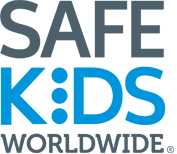Safe Kids Worldwide 15-Year Trend Report Finds Young Walkers Safer Today; Teens Now Most Vulnerable Age
Washington, DC– School supplies are bought, backpacks are ready. Parents have planned how their kids will get to school. But one thing parents might not think to do is talk to their children about walking there safely, particularly their teenagers.nbsp;Here’s why it’s important: teenagers are now the most at-risk youth for pedestrian injuries, according to a new study released today by Safe Kids Worldwide and FedEx.
“Walking Safely, A Report to the Nation” examines 15-year trends in child pedestrian injuries and deaths in the U.S. The report reveals that while walking safety has improved overall for children since 1995, there are still a staggering number of children hit by cars. More than 61 children are injured every day severely enough to seek medical attention. More than 500 children are killed every year.
Interestingly, the most at-risk age group has shifted since 1995 when 5-9 year olds sustained the most injuries, to today when teens are at greatest risk. The death rate among older teens is now twice that of younger children.
“This shift tells us two things,” said Kate Carr, president and CEO of Safe Kids Worldwide. “While our focus on younger kids has made a difference, we need to turn the spotlight—and our collective efforts—on this disturbing trend impacting our teenagers.”
Teens Are Now Most At Risk
The Safe Kids study reveals an upward trend in pedestrian injuries among teens. In the last five years, injuries among 16-19 year olds increased 25 percent over the previous five years. Today, 14-19 year olds account for 50 percent of child pedestrian injuries.
“We suspect one cause of this disturbing trend is distraction, since the increase in teen injuries seems to correlate with the prevalence of cell phone use, both among walkers and drivers,” said Carr.
Younger Walkers Safer Today
Overall, there is good news. Child pedestrian deaths are down 53 percent and injuries are down 44 percent since 1995.
Progress is particularly evident among younger kids, where education and school zone improvement programs like the Walk This Way initiative created by Safe Kids and FedEx have been in effect for the past 13 years.
In 1995, 5-9 year olds led the nation in injury rates. Today, injury rates among that population are down 65%.
One case in point: the most vulnerable walkers in 1995 were 7 year olds, when 4,225 kids that age were injured. Fifteen years later, injuries among 7 year olds dropped to 723.
New Walkers Require Extra Attention
Our nation’s youngest walkers are especially vulnerable, as their exuberance in their new mobility knows no (safety) bounds. Parents and caregivers have to be especially vigilant around roadways. Deaths among new walkers, ages 1-2, are second only to teenagers.
Back to School Time is Time for Extra Vigilance
More children are hit by cars in September than any other month. The number of injuries is highest in the months when most students end and begin the school year (June, August and September.)
A National Call To Action
This is the third report in a series conducted by Safe Kids Worldwide with the support of FedEx, who have collaborated since 2000 on the Safe Kids Walk This Way program to teach drivers and child pedestrians about safe behaviors and to create safer, more walkable communities. As part of the FedEx commitment to learning about the issues that impact road safety, advancing safe driving practices and improving safety conditions in the communities in which FedEx operates, the Walk This Way program has made significant progress in accelerating child pedestrian safety, particularly among younger children.
Safe Kids Worldwide and FedEx are calling on community leaders and parents to join in doubling efforts to make roads safer for kids. Five areas for action are identified.
Continued education on walking safety directed at children, parents and drivers.
Effective programs and messages directed to teens.
Added investment around schools to make walking safer for kids, i.e. crosswalks, signals, sidewalks.
Further research on the impact of distraction and most effective ways to change behaviors.
A call to everyone to walk and drive without the distraction of mobile devices.
“Working with our partners in communities and through our programs sponsored by FedEx, we’ve made great strides in improving safety for younger kids, but we are far from able to claim success with so many kids still in danger,” said Carr.
Download Report
Download Tip Sheet
Download Infographic
About Safe Kids
Safe Kids Worldwide is a global network of organizations dedicated to providing parents and caregivers with practical and proven resources to protect kids from unintentional injuries, the number one cause of death to children in the United States. Throughout the world, almost one million children die of an injury each year, and every one of these tragedies is preventable. Safe Kids works with an extensive network of more than 600 coalitions in the U.S. and in 23 countries to reduce traffic injuries, drownings, falls, burns, poisonings and more. Since 1988, Safe Kids has helped reduce the U.S. childhood death rate from unintentional injury by 53 percent. Working together, we can do much more for kids everywhere. Visit us at safekids.org.
About FedEx Corp.
FedEx Corp. (NYSE: FDX) provides customers and businesses worldwide with a broad portfolio of transportation, e-commerce and business services. With annual revenues of $43 billion, the company offers integrated business applications through operating companies competing collectively and managed collaboratively, under the respected FedEx brand. Consistently ranked among the world's most admired and trusted employers, FedEx inspires its more than 300,000 team members to remain "absolutely, positively" focused on safety, the highest ethical and professional standards and the needs of their customers and communities. For more information, visit news.fedex.com.
Media Contact
Jen Pollakusky
Media Manager
[email protected]
202-662-4476
